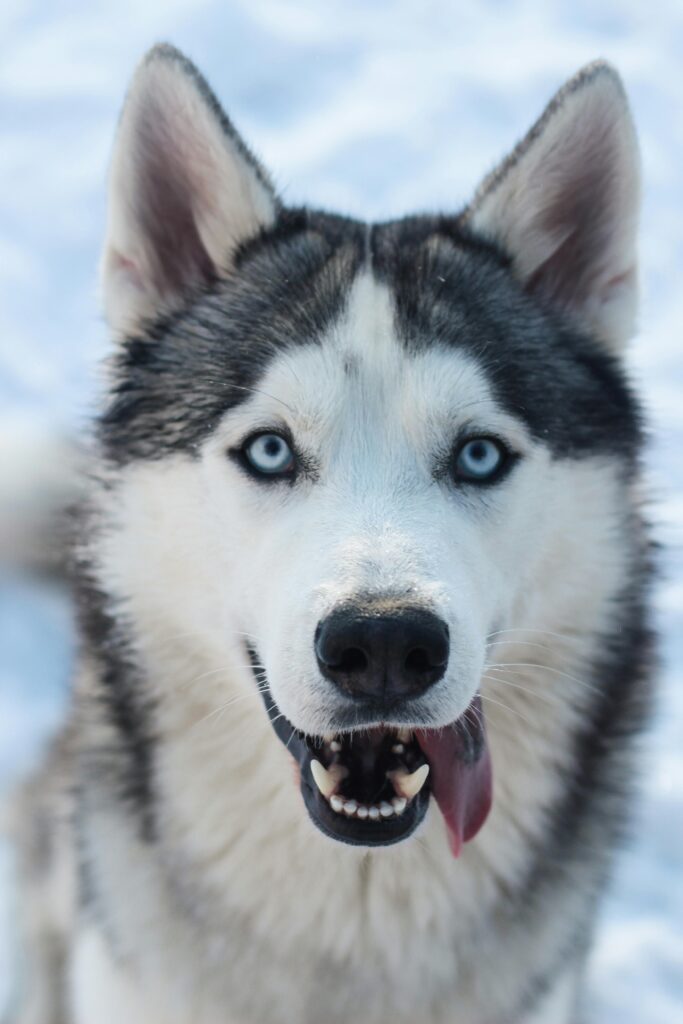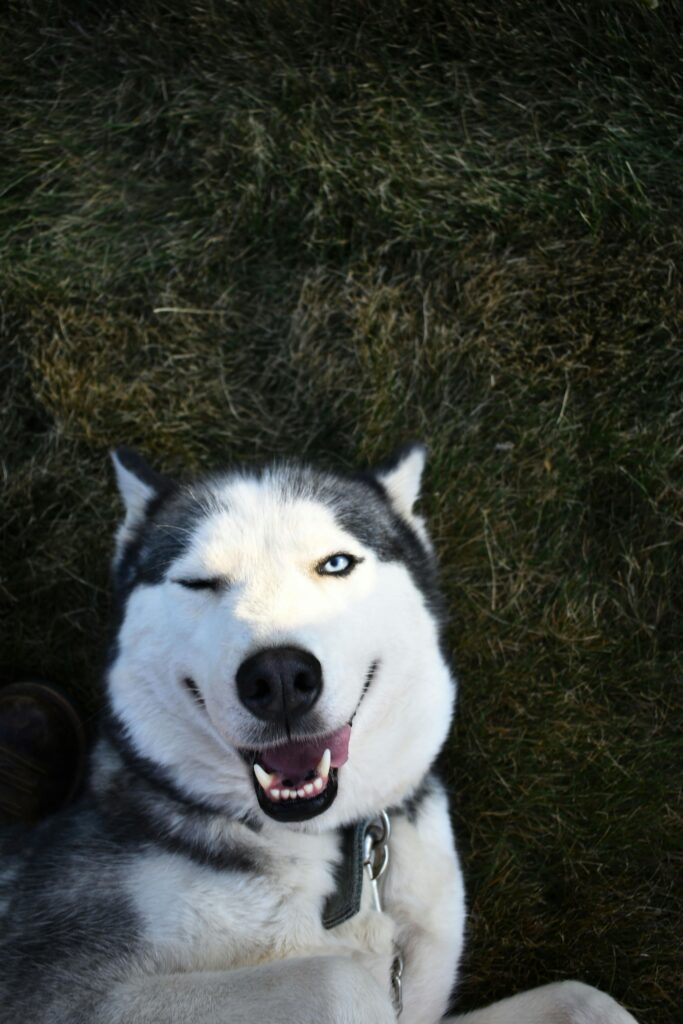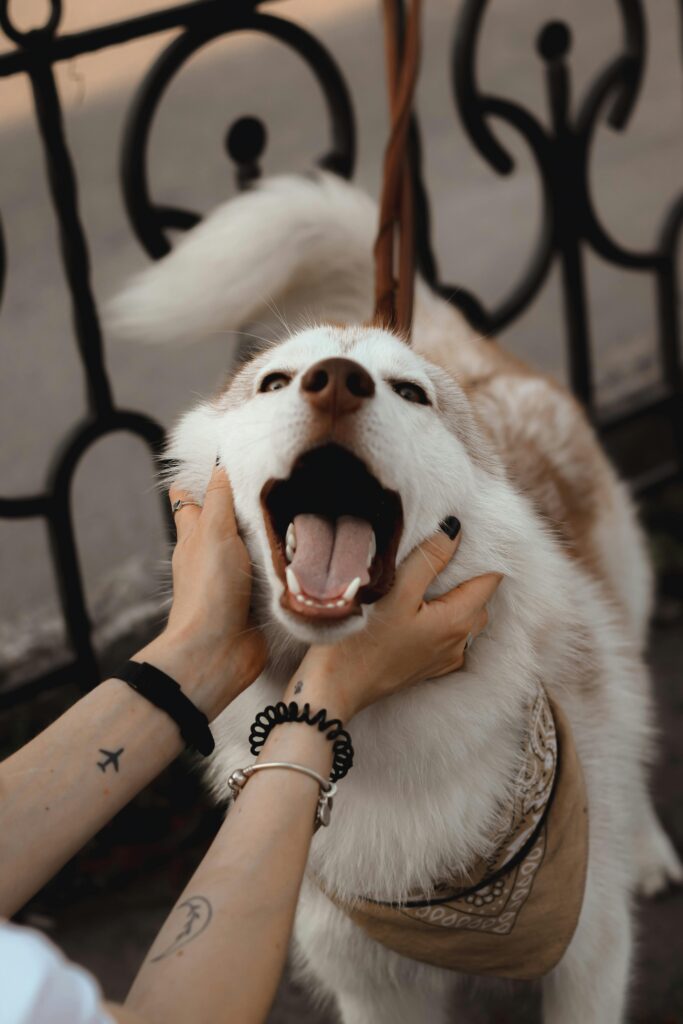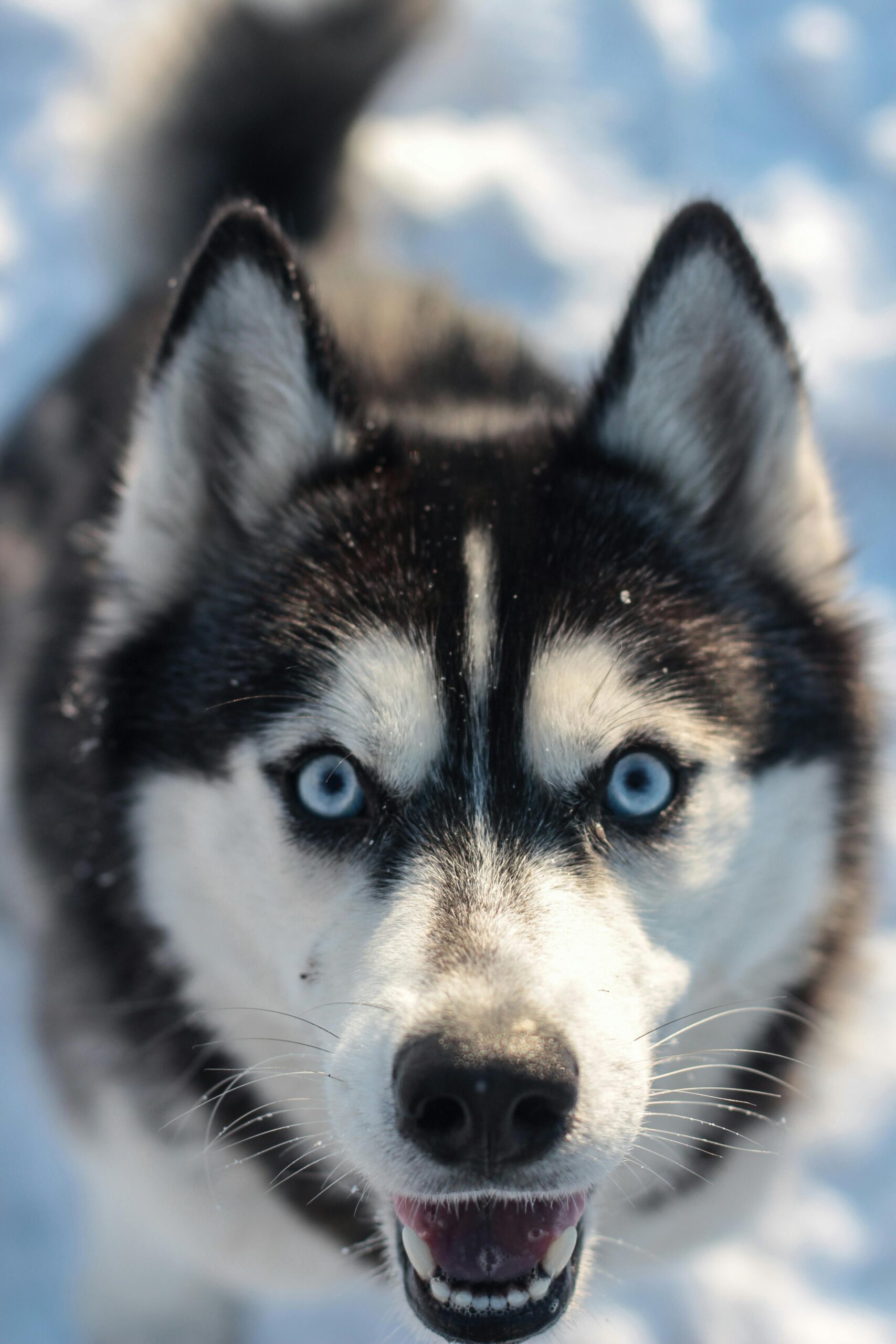Introduction
Siberian huskies are active, outgoing, and smart dogs. They love to play with children and other pets. They are popular for their appearance, especially their eyes, which are blue-colored, bicolored (blue and brown), parti-colored (blue and brown mix), and green (rare). Around one-third of the popularity rise of the Siberian Husky in India is because of their distinctive eyes and wolf-like bodies. Blue-eyed Siberian huskies are generally more common in India as compared to other varieties. This breed is best for functioning families, but also requires much care and love.

Photo by Kateryna Babaieva
If you are planning to buy or adopt a Siberian husky, then this blog will help you explore everything about this breed in detail.
Quick Information
• Origin—Siberia
• Life expectancy—13-15 years
• Height—21-24 inches (male), 20-22 inches (female)
• Weight—21-28 kg (male), 16-24 kg (female)
• Color—black, white, gray, red, sable
• Ideal weather—12-23°C
• Energy level—high
• Shedding level—high
Can a Siberian husky survive in India?
Siberian husky breeds are for cold temperatures. They do survive in India but are not suitable for many states, such as Rajasthan, Madhya Pradesh, states bordering Rajasthan, Tamil Nadu, or other hot South Indian areas. They can easily handle -10°C temperatures because of their thick double coat, which is highly insulated as compared to other dog coats, but they can only have a quality life if you provide them with a proper air-conditioned environment; otherwise, they would suffer from heat stress and other skin diseases.
Cost of Siberian Husky in India
Price ranges are different in major cities such as Mumbai, Bangalore, Delhi, etc., and there are so many factors that affect the cost, such as breeder reputation, color, lineage, physiognomy, etc., but a standard healthy Siberian husky pup will cost around Rs. 50000-100000, depending upon the ethical breeding practices and reputable breeders.
Monthly expenses of a SiberianHusky in India
Siberian huskies are high-maintenance dogs; they need cold temperatures, good food, excellent grooming, and quality veterinary care.
Assumptions of these expenses are
• Food—Rs. 3500-7500/- monthly.
• Grooming—Rs. 3000-10000/- terminally
• Veterinary checkups, including vaccinations—Rs 4000-10000/- annually.
(Extra electricity bill for maintaining a cold environment)

Siberian husky behavior, temperament, and appearance
Siberian huskies are medium-sized dogs with a thick, beautiful coat that comes in different markings and colors. Due to their extremely mesmerizing featured eyes and wolf-like structure, they can be easily noticeable and popular among dog lovers. Talking about their bodies, they have an athletic and energetic build, which is also appealing to this breed.
They are skilled in climbing fences and escaping tunnels, so make sure your fences are escape-proof. They can be bored easily; that’s why they require enough exercise, long walks, and different kinds of games for mental stimulation. The Siberian husky behavior and temperament is friendly, playful, curious, and independent. Due to their highly intelligent and dramatic nature, their training could be a challenge sometimes; that’s why patience is very important in the case of this breed. They are usually good with children, other people, and pets.
Feeding and Nutrition Guide for Siberian Husky in India
The diet of Siberian Husky in India should be rich in protein, carbohydrates, fats, vitamins, and minerals. So, it is important to give them the diet and portion that includes all nutrients in sufficient quantity.
Here, Discussing on their food, they mainly take two types of diets.
• Raw
Where you can focus on raw chicken, meat, bones, fish, lamb, slightly cooked vegetables, etc. Huskies diet portions depend on their age, size, and activity level.
• Customized or marketed products.
They came in two types: wet and dry food. Huskies either take a dry food diet, a wet food diet, or both. These foods are specially tailored according to the age, size, and metabolism rate of different dog breeds. If you are not able to provide them with daily protein- and fiber-rich home-cooked food, then you can switch to different customized wet and dry food. Your dog gets plenty of everything in this meal.
There are many reputable companies in the market that manufacture different varieties of puppy food and adult food that are now embraced by almost all dog owners.
How much food should be fed to a Siberian husky?
As humans, feeding your dog in multiple small portions throughout the day keeps your dog healthy and happy. Don’t give them free meal portions; instead, use portion bowls to control their diet, as they easily tend to overeat. Above all, take your veterinarian’s advice to provide them with a tailored and healthy diet.

Siberian Husky grooming guide
Proper grooming keeps any dog healthy and happy, and in the case of Siberians, it is a very crucial part of owning them. From their thick double coat to their bright eyes, every part of their body needs periodic grooming.
Here’s a complete grooming guide for Siberian huskies, wrapping all the necessities.
• Coat care
Siberian Husky has a dense double coat evolved for cold weather. They shed heavily; that’s why they require customized shampoo and body oil to keep their coat soft and healthy. It is advised to brush their coat with a slicker brush at least twice a week to avoid unwanted hair falling everywhere.
• Dental hygiene
Dental hygiene in dogs is underrated, but is equally important as other grooming steps. Brush your dog with customized dog brushes and toothpaste to avoid plaque buildup. You can also offer them dental chews and toys for bad breath and healthy growth of teeth.
• Eye and Ear care
Siberian huskies have watery and teary eyes that often lead to various infections. Wipe their eyes with a soft cloth or wipe tissues at least once a day to avoid eye problems. Clean their ears to avoid dirt and wax buildup. Always use either a cotton pad or a vet-approved ear cleaner to avoid infections and discomfort.
Siberian Husky Training
Siberian Husky training should begin when they are in the puppy stage. Early training is difficult but much needed to prevent unwanted behaviors that become a habit in adulthood. Start their leash training as soon as possible because of their strong prey drive and natural curiosity. Huskies are very vocal dogs, so it is important to keep an eye on excessive barking and howling. Siberian huskies have an independent nature that makes their training more difficult compared to other dogs, so positive reinforcement techniques such as treat-based rewards, offering toys, a lot of patience, and consistency are required. Fun activities such as rally, agility, fetch, sledding, and running keep your dog healthy and cheerful.
Siberian Husky health issues
Siberian huskies are delicate dogs; that’s why they suffer from many health issues. Let’s discuss them in detail.
1. Cataract
This is one of the most common problems in Siberian huskies. If you observe any milky, cloudy, or opaque lens, then it must be a cataract. It causes blurred vision, night blindness, and even total vision loss. The reasons behind cataracts in Siberian huskies are heredity, age, and other diseases such as diabetes.
2. Corneal Dystrophy
Corneal dystrophy is also an eye-related issue where the center of the cornea is described by white and opaque film development that causes a change in Husky’s vision. Until it grows much, it doesn’t require treatment. You can take advice from an eye specialist if you notice no changes in the opaque lens over time.
3. Hypothyroidism
When the thyroid gland is not able to produce enough thyroid hormone, this causes hypothyroidism. It slows the metabolism rate, resulting in weight gain, hair fall, and coat depletion. However, it can be easily treated with daily thyroid supplements.
4. Progressive retinal atrophy
PRA is a genetic disorder that affects the vision of Siberian huskies. It occurs when the eye-specific cells, rods and cones, do not appear on time. This causes a change of vision due to a lack of transmission of light to the brain.
5. Hip dysplasia
This is a common condition in most of the medium-sized dog breeds where a ball-and-socket joint of the hip does not develop fully, resulting in the onset of pain while sitting, standing, squatting to urinate and defecate, and ultimately developing arthritis in dogs.

Common health issues that Siberian huskies face in the Indian climate
Siberian Huskies are dogs for cold weather; that’s why they suffer from some additional problems. Here is a list of health challenges that huskies go through in India.
• Dehydration
• Skin issues such as dermatitis and hot spots
• Heatstroke
• Hip dysplasia
• Hypothyroidism
• Cataract
• Obesity
• Parasites • Dental diseases, etc

The rapid need to know about the Siberian Husky in India
• Extra training is required.
• They are suitable for experienced owners, not for first-time pet parents.
• Owners need to be fully aware of their health issues.
• They are medium-sized dogs.
• They require frequent grooming.
• They enjoy vigorous walks.
• They like conversations as they are chatty and vocal dogs.
• They have minimal drool.
• They enjoy a minimum of two hours of daily walking and exercise.
• They are big attention seekers.
• They alert and bark at anything unusual.
• They need a large space.
• They cannot be left alone.
• They need a cold environment to live in.
• They are best suited to the countryside.
• They may need extra training to share the same home with other pets.
• They need minimal supervision while playing with children.
• They are very sensitive and need a lot of love and care.
FAQ
1. Can a Siberian husky survive in India?
Yes, Siberian Huskies easily survive in India, but they require much care and effort, as India is generally warm and humid. They are Siberian breeds from cold arctic conditions; that is why they have thick, dense double coats that overheat fast in warm weather and cause serious skin and health issues for the dog.
2. Why is the Siberian husky howling?
Siberian Huskies are vocal dogs; they are known for their howling and dramatic voices. They use howling to communicate both with humans and other animals. These are pack dogs, and this is their natural behavior that comes from their wolf-like ancestry.
3. When is the Siberian husky fully grown?
Siberian Husky is fully grown by height and weight at the age of 1-1.5 years, but they continue to gain muscle tone and chest until the age of 2 years.
Final words
Bringing home a Siberian Husky in India is a soothing experience for the dog owner. With their thick fur, dramatic nature, and, most importantly, their striking eyes, they are one of the most adorable breeds you can own. But maintaining a husky requires much care and effort. They are delicate dogs who need a well-balanced diet, proper grooming, a cold environment, regular exercise, and walk sessions to stay fit and happy. If you are ready for all these responsibilities, then owning a Siberian husky is not a bad idea because it only brings joy to your life every single day.
Read more if you want to know about The Best Dog Breeds in India

